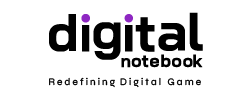Content Management System (CMS): A Comprehensive Overview

Effective content management and delivery are crucial for businesses and organizations in the digital age. A content management system can be useful in this situation. A software platform known as a content management system enables users to easily generate, edit, organize, and distribute digital information. Moreover, it makes the development and management of content easier, enabling companies to have a lively online presence. In this post, we shall go into the idea of content management systems, their features, advantages, and well-known examples.
What is Content Management System?
A CMS or content management system is a piece of software that enables the production and distribution of digital material. Furthermore, a content management system (CMS) enables you to quickly change your digital experiences before publishing them to the web and other digital media. It’s the method through which you organize the digital material to offer to a site visitor, and it’s the layer that stands between you as an organization and the digital experience your client engages with.
Moreover, there are several different kinds of content management systems out there. The top three are as follows:
Open-source CMS: rather than being owned by a single corporation, the software is maintained by a group of developers. The functionality of the program may be developed and enhanced by third-party developers who have access to the source code.
Cloud CMS: a ready-made system that can be used without the need to download any gear or software. Users may securely manage online material in the cloud and have it readily available on various devices.
Proprietary CMS: A licensing fee is required for proprietary CMSs since they are the exclusive property of the business, group, or person that developed them. The price may be an upfront lump sum payment, a wp-signup.phpular monthly charge, or an annual fee.
Key Features of a Content Management System
- Content Creation and Editing: The simplicity with which material may be created and edited, including text, photos, videos, and other types of media.
- Content Organization and Structuring: The capacity to categorize or arrange stuff in a hierarchy using tools like categories, tags, or folders.
- User Management: The capability of managing user roles and permissions, which enables various users to have various levels of access and control over the material.
- Workflow Management: The ability to build and manage content pipelines, including multiple user collaboration and content clearance procedures.
- Publishing and Delivery: The capacity to offer material in numerous formats across many platforms, including websites, mobile applications, and social media channels (HTML, XML, PDF, etc.).
- Templates and Themes: The availability of pre-made templates and themes that allow users to alter the appearance and feel of their websites or applications without using any programming language.
- Security and Access Control: Implementing robust security measures to protect content from unauthorized access, including user authentication, data encryption, and secure user sessions.
- Mobile Responsiveness: Ensuring that the CMS’s user interface and published content are responsive to various screen widths and suited for mobile use.
- Backup and Recovery: Provide tools for frequent content and configuration backups and facilitate simple system recovery in the event of data loss.
Benefits of Using CMS
User Friendly
Using a CMS has several advantages, one of which is user-friendliness. Users can manage material without having any technical knowledge thanks to user-friendly tools and straightforward interfaces. Furthermore, it facilitates rapid upgrades, lessens dependency on coders, and streamlines content generation. Additionally, users that utilize user-friendly CMS platforms can easily take charge of their content management chores.
Customization Options
Businesses can adapt their website or application to meet their unique demands thanks to the customization capabilities provided by a CMS. Moreover, businesses can establish a distinctive and recognizable online presence by utilizing tools like adjustable templates, themes, and layouts. Additionally, customized plugins and extensions offer a more individualized user experience while enhancing functionality.
Easy Collaboration
A content management system (CMS) enables simple team collaboration and the rapid production, modification, and approval of material. With tools for workflow management, real-time changes, and shared access, CMS platforms make it easier for teams to collaborate and create high-quality content.
Instant Updates
By allowing for immediate adjustments, a CMS ensures correct and timely content alterations without the need for technical expertise. Due to their adaptability, businesses can quickly respond to market developments, update their content, and maintain a vibrant online presence. However, quick changes made possible by a CMS improve the user experience and maintain the freshness of information, encouraging engagement and relevance.
SEO- Friendly
Your website will benefit from using a CMS if it is SEO-friendly. Also, CMS solutions include options for customizing meta tags, URL structures, and XML sitemaps, which improve search engine optimization. Therefore, this raises your site’s exposure in search results, strengthens your organic ranks, and brings more relevant visitors to your site, which eventually results in improved engagement and conversion rates.
Mobile Friendly
By optimizing content for multiple screen widths, a CMS guarantees mobile-friendly websites. Therefore, users can offer a smooth surfing experience on smartphones and tablets by using responsive design and mobile-responsive templates. Moreover, this accessibility boosts user interaction, raises search engine ranks, and accommodates an increasing proportion of mobile users.
Popular Content Management Systems
With a multitude of CMS platforms available in the market, it can be overwhelming to choose the right one for your needs. Here’s an overview of some popular Content Management Systems (CMS) platforms:
WordPress
39.5% of the internet is driven by the most widely used online content management system, WordPress. It is a self-hosted, free CMS that supports all types of websites and includes powerful content management capabilities. Since it has a high learning curve, the fact that it is an open-source platform with a sizable community and forums is helpful for novices.
Shopify
Shopify is a leading CMS platform specifically designed for e-commerce website designing. It provides a comprehensive set of features to create and manage online stores effectively. Shopify offers responsive themes, secure payment gateways, inventory management, and marketing tools. It is a hosted solution, meaning that the technical aspects of hosting and server management are taken care of by Shopify.
Drupal
Major corporations and governmental organizations use Drupal for web content management. In addition, it has outstanding page load times, cutting-edge security measures, built-in modules for integrating analytics, marketing, and eCommerce capabilities, and functionality. Creating a website needs hosting and some basic coding knowledge; however, novices can find the interface more challenging than WordPress.
Magneto
Samsung, Nike, and Ford all utilize the Magento eCommerce platform, which is well-liked for medium- to large-sized online enterprises. There are two variations available: open-source and commerce. The open-source version offers global selling, site search, and catalog management, while the Commerce edition offers premium features.
Joomla
Excellent open-source content management system Joomla is compatible with all kinds of websites. It is appropriate for developers and technical users since it offers features like separated portions and revision features. Therefore, choose a Joomla web host that offers simple hosting administration features if you are starting.
Bottom Line
In the digital era, a CMS is a potent tool for efficient content management and distribution. Additionally, it has capabilities including publishing templates, security, user administration, workflow management, content categorization, and mobile responsiveness. WordPress, Shopify, Drupal, Magento, and Joomla are examples of well-known CMS platforms. Moreover, by leveraging a CMS, businesses can streamline their content management processes, enhance user experiences, and achieve their online goals.






